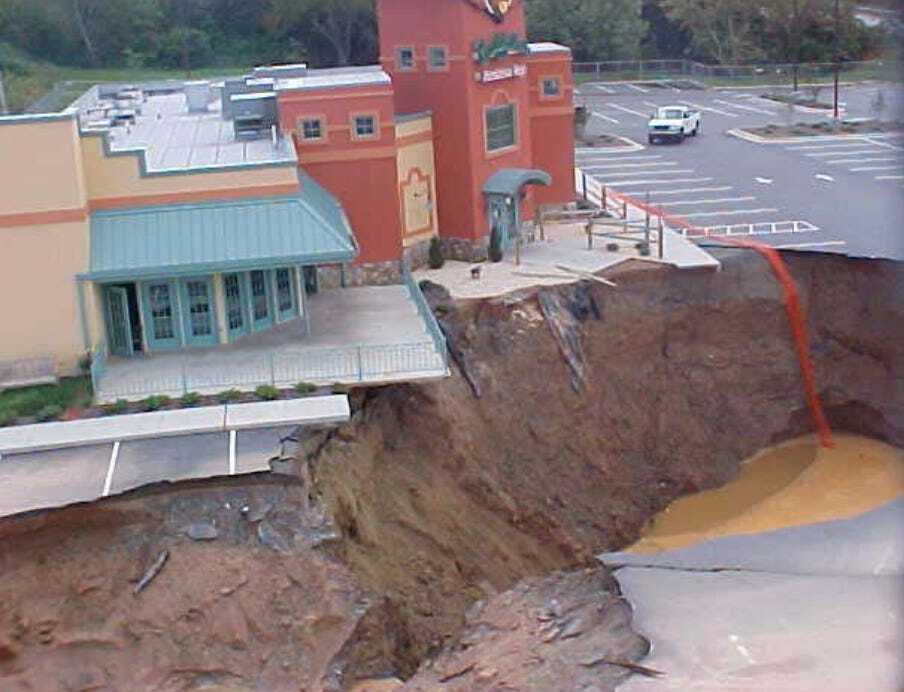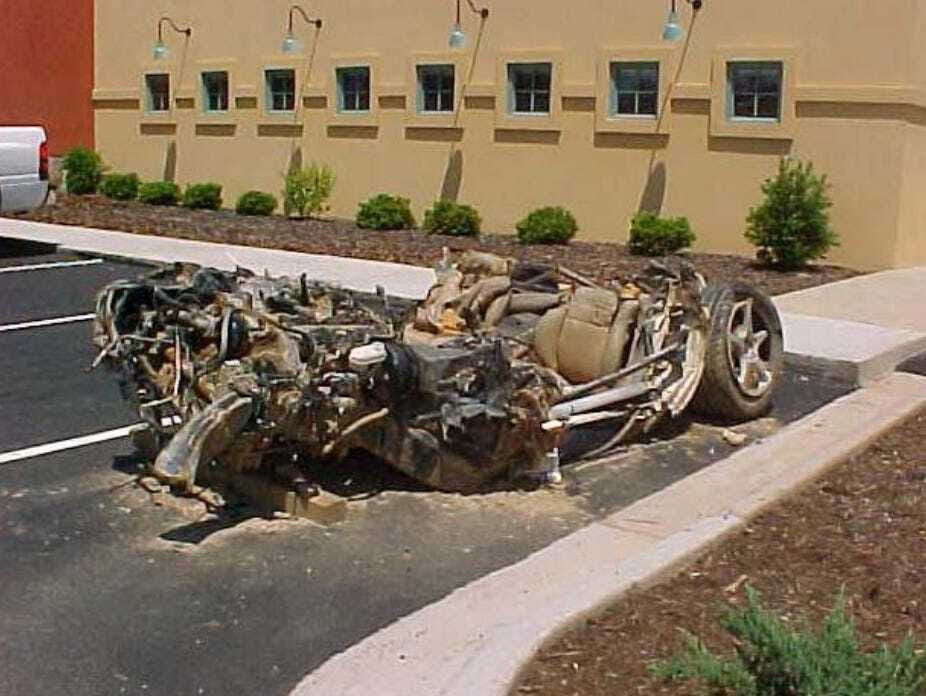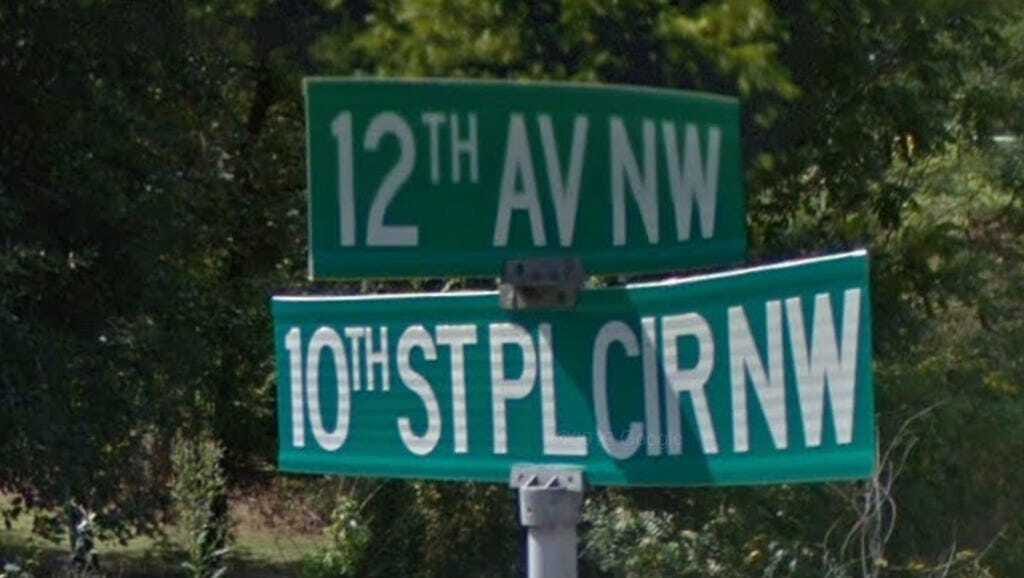Look, a lot of bad things are happening in the world, so just for a moment, I would like to focus your attention on some weird shit that’s happening right now in Hickory. Three Rabbit Hole readers sent me some form of this:
Here’s the situation: The city of Hickory paid something like $750,000 to install some 40-ton decorative arches on a new pedestrian bridge over Highway 127. They went up last year, and when they did, construction workers heard a pop, and discovered one of the large arches had splintered. So, they asked the manufacturer how to fix it and the manufacturer said to use—and I am being dead solid serious—Gorilla Glue.
Those arches collapsed last week.
This is terrible, of course (although the arches were under warranty, so, there’s that). Nobody was hurt, which is good. There’s no word yet on a cause, although the mayor says it wasn’t the glue, and it wasn’t the 33 miles-per-hour winds (it was supposedly built to withstand 100 mph gusts). “We’re not going to let this unfortunate incident define who we are,” mayor Hank Guess told the Hickory Daily Record. I agree. Because when it comes to infrastructure, Hickory is North Carolina’s Narnia.
A Sinkhole Ate a Corvette One Time

On August 17, 2002, Ralph Betz walked into the Buffalo’s Southwest Cafe on Highway 70 in Hickory. He watched a stock car race. When he walked back out, his Corvette was sitting at the bottom of a 38-foot-deep sinkhole that had opened up while he was inside.
It actually took four months to get Ralph’s car out of the hole. His insurance had already bought him a new one by then. In a twist, the story made the Weekly World News, and was (gasp) completely accurate.

After some initial finger-pointing over whether it was the city or the restaurant’s responsibility, the restaurant owner spent nearly a million dollars to fix it. Contractors dumped more than 230 truckloads of dirt into the hole, and fixed cracks in the building’s foundation as well. The repairs pretty much bled the place dry. Buffalo’s re-opened nearly a year later, in July 2003, but closed for good in May 2004, after the owner defaulted on his loans.
Then people started flinging lawsuits around, mostly having to do with the pipes and culverts that ran under the property. During the process, an investigator found that the original owners of the property had installed a corrugated metal drainpipe underneath the ground and connected it to a culvert nearby. When they’d filled in the dirt around the pipe, they didn’t do it quite right. Plus, the pipe wasn’t connected properly, it was never cleaned out, and corrugated metal isn’t really a great long-term solution. Hence, over time, water washed out the dirt around the pipe until BAM: Corvette-eating sinkhole.
Then things got whimsical. In July 2005, Hurricane Cindy rolled through Hickory, and the sinkhole opened up again.
In March 2006, a man named Steve Mason bought the property from the bank for one dollar. Mason, a grading contractor from Cleveland County, planned on fixing the sinkhole and then selling the property. He demolished the restaurant and went to work. But after ten years and fights with the city and others, he threw in the towel:
"I've sunk $600,000 into the project and it is still worthless," he said.
Mason has not paid property tax on the site since 2007. He hopes the city will just take the property.
"They don't even need a lawyer, just come to me with the papers and I will sign," Mason said.
He got his wish. The city of Hickory bought the property in 2016 and worked with NCDOT to fix the sinkhole for good in 2017, mostly because it was constantly threatening Highway 70 with every heavy rainstorm. Finally, in 2018, at a cost of nearly $5 million, the hole was fixed.
That year, another sinkhole opened up in the parking lot of the Valley Hills Mall down the road. The culprit: Another drainpipe.
It’s hard to say whether Hickory has the misfortune of having a lot of sinkholes, or whether we’re simply more aware of them there because one of them swallowed a whole damn Corvette 20 years ago. Either way, corrugated metal piping seems to be at fault. A lot of it was installed during the ‘40s, ‘50s, and ‘60s, when it was cheap and still legal to be used for a lot of things that we don’t use it for now. Like, say, drain pipes that you want to last for a long time without leaking.
A street is a place is a circle near an avenue

I once drove to Hickory to buy a kayak. The guy I was buying it from gave me very specific instructions on how to get there, and I still got lost. This was about ten years ago or so, back before I had Google maps, and I had to follow turn-by-turn instructions from Mapquest. It was… tough, because Hickory has either the most genius or the most confusingly-named street grid in the country.
Things are so migraine-inducing that the city has a four-page instruction manual: “Helpful hints to navigate Hickory, NC streets.” Swear to God, it starts off like this:
Sometimes the statement “You can’t get there from here,” is considered by some to be the best explanation of how to get around in the City of Hickory.
This is a city that is, up front, admitting defeat.
It’s been this way since 1951, when the city thought its street-naming system was mess (ha!). So Hickory hired John Parker, the first dean of UNC Chapel Hill’s regional and city planning school, to come up with a better way. Parker divided the city up into quadrants, which he then appended to the end of streets and avenues. But then, when a street appeared that wasn’t a tidy part of the grid, he slapped another name on the end:
A lot of addresses seem to be confusing because they end in Place, Court, Circle, Drive, Lane, or Way. These addresses usually fall within a defined block, according to the city’s grid system. For example, 7th Ave. PL would be between 7th Ave. and 8th Ave. and 7th St. Pl would be between 7th St. and 8th St.
ARE YOU STILL WITH ME HERE? BECAUSE IT’S NOT GOING TO GET ANY CLEARER.
One of the most common complaints by city travelers is that a street will pick up on one side of town and perhaps stop and start several times on its way to the other side. This is to be expected due to buildings and institutions, such as schools and churches or a drainage way such as a creek. It only makes sense to continue that street name on the other side of the building, rather than assign a new name.
“It only makes sense.”
All of this means that if you’re driving around without GPS, and if you don’t have the mental capabilities of a Jeopardy! contestant, you can very easily get turned around. Likewise, if you do open Google Maps, it is very easy to confuse, say, 7th Ave. Place NE with 7th. St. Place NW, and end up on the completely wrong side of town. A few people say they actually love this system because they can find their way around Hickory with only an address. Those people are lying.
Anyhow, if you’re wondering, the longest name for a street in Hickory is Sixth Street Circle Court Northwest. Please don’t make me go there to buy another kayak (my first one was stolen).
I can’t completely rag on Hickory. It has a fantastic art museum. It’s actually seeing a boom in furniture manufacturing at the moment. It’s possible to spend a lovely day there walking around Union Square downtown. There are some great things to see there, so long as you don’t get lost and drive into a sinkhole first.
(h/t Lew Powell, Doug Miller, and Corbin Peters)
